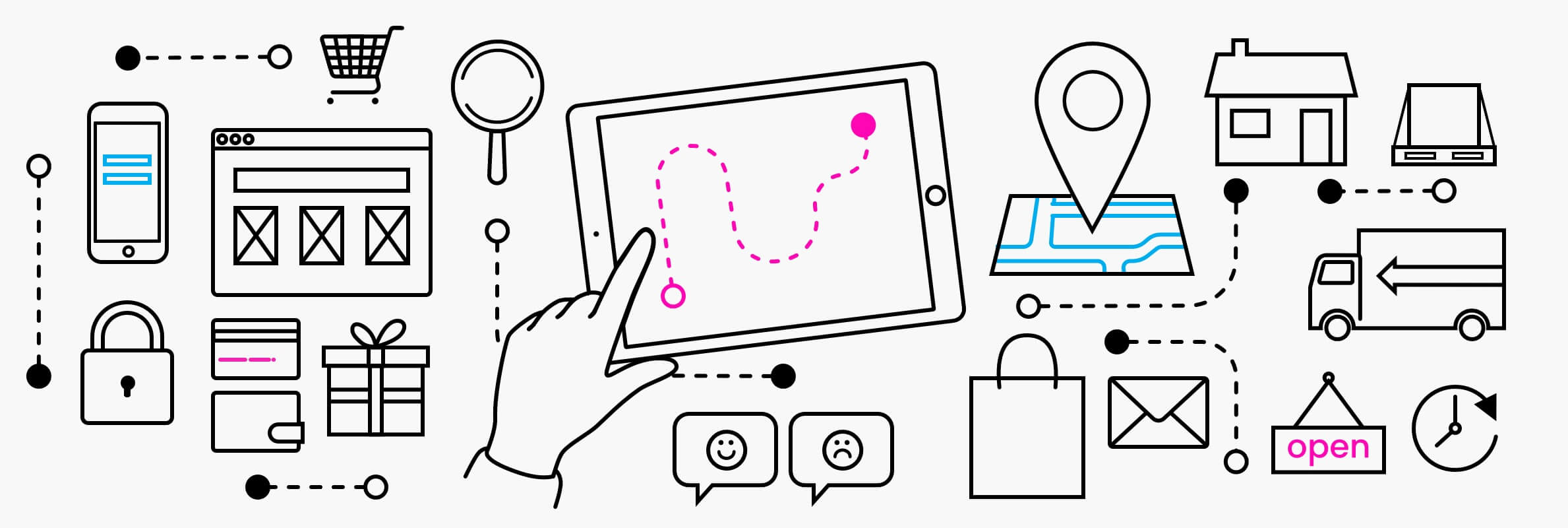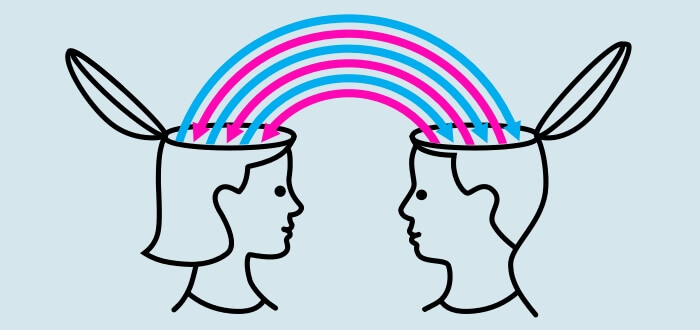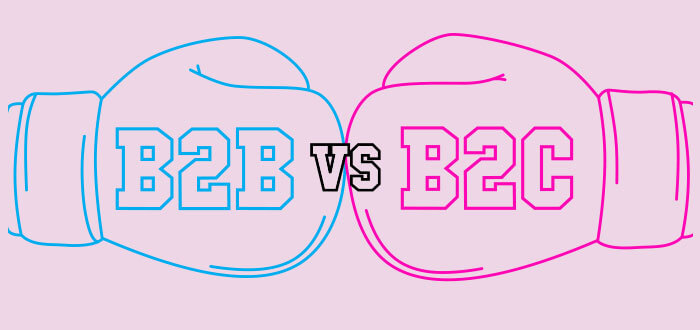The nature of experience
Experience is by nature emotive and subjective. As human beings, we’re all different and we perceive things in different ways.
How you make your business customers feel in each and every interaction you have with them matters. It forms their perception of your brand — whether positive or negative. We recall negative experiences more easily than positive ones, so the good connections that we make with our customers should be genuinely useful, tangible and consistent.
Decision-making is not always as rational as we might think either. Impressions matter and perceptions can change. Perceptions of risk and commercial gain come into play, particularly in the B2B space.
B2B companies have to accommodate the needs of various audiences, throughout what is often a longer and more complex buying cycle. One that demands more time and commitment from a potential business customer. Factor in regulatory compliance and the task of meeting each customer’s needs becomes that bit more challenging.
With that said, where there are multiple points of interaction with potential decision makers and end users, there is opportunity. The chance to solve problems for your prospects and leave a positive lasting impression.
Evolution of customer experience
User experience (UX), stemming from web engineering, refers to the interaction between humans and systems, and whether this is positive or negative. Web design has evolved to be user-centric.

In a broader sense, focussing on customer experience (CX) across your business involves shifting the focus away from what you think about your corporate brand, to how your audiences perceive you. At every touch point, across departments and every channel.
The experience is ultimately owned by the user or customer. And expectation plays a key role in whether or not their perception of an interaction is a positive one.
It’s important to remember your ideal customers are quite accustomed to the modern digital world and they have real lives outside of corporate life. So no company, regardless of its business model, can afford to lag behind in delivering the kind of service and experience customers have come to expect.
Studies have been able to quantify the positive impact CX has on business revenue and growth. Its relationship to brand identity, also means CX enhances company value and influences customers to pay higher prices. The benefits of investing in CX, actually outweighs the cost.
Customers that have the best experiences, return more frequently, spend more, and stick around longer. Positive experiences drive action and encourage word of mouth referrals, reducing cost per acquisition.
The modern buying journey
The buying journey has never truly been linear, even before the advent of the search engine. In an ideal scenario, our prospects would become aware of our offering, interact with us, purchase and the cycle repeats.
In reality, the journey is multi-faceted with hundreds of micro instances of potential interaction with a brand. Digital has amplified the possibilities, made information more accessible, and alternatives readily available.

Advances in technology, together with shifts in user behaviour, have seen the lines between online and offline experiences blurred. As people we operate fluidly across channels, searching for things we need at different stages in the buying process, using our preferred devices interchangeably.
A single customer might actively spend their day performing hundreds of actions: flicking through a brochure, accessing the web, listening to a podcast, travelling, attending an event, making calls, and so on. We might think of these actions as insignificant. Yet, early exposure to a company with a positive experience can serve to prime later decision making at that crucial purchase stage.
Leaders in B2C understand this well. The brands we all know, focus all their efforts on the customer first and foremost. For B2B, it’s no different — careful consideration needs to be made on where gaps in the CX are, where there are key points of improvement and opportunity.
Corporate brand building and a focus on CX throughout the B2B buying journey is essential for creating the right perception and eventual reputation to lay the foundations for repeat business.
Leveraging data to map the journey
With more data at our disposal than ever before, it can be tempting to get bogged down in numbers and stats. Interrogating data in a way that’s genuinely useful, involves mapping it back to real people — your customers. Then feeding this knowledge into your marketing strategy.
Developing user personas is an effective way of beginning to map the different journeys of your key stakeholders. User personas put human faces to your target customers or markets. They are descriptive profiles of your key audiences, where you build out each persona’s unique characteristics, needs, behaviours, motivations and pain points.
Linking behavioural and demographic data, with sales and lifecycle insights, is powerful. Your Analytics and CRM data can be used to develop your user personas. This forms a joined-up approach that relies upon efficient tracking systems.
This is something we help our clients with — gathering business intelligence, creating data-led personas and customer journey maps. Enabling them to challenge traditional instincts or assumptions and instead deliver enhanced experiences to their customers.
In practice, this means developing more effective content strategies that resonate with the informational needs of the more complex B2B customer. Producing compelling content and showcasing expertise, as well as delivering more novel experiences that help differentiate companies from their competitors.

For our client JDP for example, our approach was a holistic one. Data insights supported a website redesign, the creation of a supporting hub of educational content and an app.
This is brought together with a local SEO strategy and a click and collect offering is in the pipeline — both initiatives leveraging JDP’s extensive local branch network and innovative stock control systems. These are areas that may have been pioneered in B2C, but have led to a modern and creative approach for our B2B client in their sector.
Using technology to your advantage
To keep pace with the speed of the post-digital era and increasingly demanding customer expectations, technology is an essential partner. As technologies and methodologies evolve, and continue to do so, we must stay agile and in touch with what users are looking for and expecting.
CRM systems can be built to complement the changing user journey. Tracking and Analytics systems have become more advanced to enable data insights to make timely, critical business decisions.
Integrating with other systems, like stock control to reduce wastage and improve efficiency, can free up resources. This can then enable increased agility to improve customer experience across the chain. Bringing systems together and improving infrastructure can understandably be complex and costly, but the benefits great.

For your marketing, delivering localised and highly personalised experiences are essential.
Digital advertising, including social advertising, has never been more targeted. Even simple targeting, like interest-based, radius location targeting or making use of beacon technologies, can pinpoint your target prospects at their time of need. Which may not be within the confines of the everyday 9 to 5.
User testing platforms are also easily accessible. These can be used to monitor how improvements are affecting user perception and experience ongoing.
Using technology, to not only understand the changing customer experience but respond in the most effective way too, ultimately requires an integrated approach that considers all layers of the journey. In our dynamic world, getting it right though can mean the difference between future success or obsolescence.


